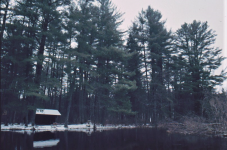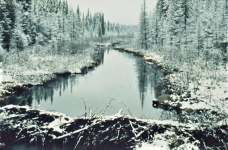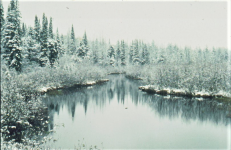I think the more you lean the easier you will turn regardless of which way you lean.
True. For those who don't know, leaning or tipping the hull off level is often referred to as "heeling." To enhance a turn, you heel the hull with a lower body weight shift while keeping your torso vertical. This is also called the "J lean" because your body sort of twists into the shape of a J.
I'm not sure if we're talking about the same thing.
Yes, the comments about heeling the hull into or away from a turn may be a bit confused. Let's say you are paddling a twisty creek and you come up to a sharp right bend. What I and yknpdlr are saying is that most lake boats will turn sharper if you heel the left side of the hull down—i.e., heeling "away from" or "to the outside of" the right turn. And vice versa for a left turn.
It doesn't matter whether you are paddling on the right, left or with a double paddle when you are heeling to the outside of a turn, although it may help the turn if you can do a sweep stroke on the outside, assuming you're paddling with a single blade on the outside of the turn. If your paddle is on the inside of the turn while you are heeling to the outside, you can of course switch paddle hands to enhance the turn with an outside sweep stroke. Or, if you keep the paddle on the inside of the turn, you can enhance the turn with a bow draw or deep C stroke while heeling to the outside of the turn.
A lot of canoe terminology is redundant, inconsistent and hence confusing, but some people call an outside heel turn a "carve turn" and an inside heel turn a "pivot turn." Highly rockered canoes, such as whitewater canoes, are usually heeled to the inside of a turn—hence pivot turned. Further with terminology, flatwater freestyle lingo calls an outside heel turn a "post turn" and an inside heel turn an "axle turn."



